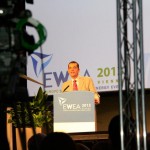
Christian Kjaer speaking at EWEA 2013
The European wind industry can beat its main competitors – other forms of power generation – “anytime” on a level playing field.
So says Christian Kjaer in his final Wind Directions interview before stepping down as CEO of EWEA on 1 April.
Free trade, the removal of subsidies for fossil fuels and nuclear, and a no carbon power sector are needed to create fair conditions, he emphasises.
Kjaer also warns that the double dip recession will affect Europe’s wind sector “badly” but that longer term its future is bright, especially because “you don’t have fuel costs with wind energy.”
Read the full interview in Wind Directions
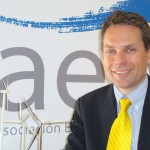
Heikki Willstedt Mesa, AEE
For the last 100 days, wind energy has provided more of Spain’s power than any other source. Yet the government is cutting support for the sector and putting a major electricity provider – and domestic industry – at risk.
Heikki Willstedt Mesa, Energy Policies Director for the Spanish Wind Energy Association (AEE) explains why the government’s latest decisions are so dangerous.
Until last week, what was the situation for renewables in Spain?
According to Spanish law, companies must get a reasonable return on their investments in renewable energy, with the average being between 7 and 8%. Last year, the new government decided there would be no more incentives for new renewable energy installations after 2012.
That was a big blow for the future industry. But then afterwards, at the end of 2012, the government also approved a 7% tax on all existing power generation installations. It was supposed to be a law for the environment, but they were also taxing wind and other renewables. That meant not only future industry was impacted, but also already existing wind farms.
So what happened last week, and how has it made matters even worse?
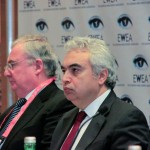
Fatih Birol and Pat Rabbitte at the EWEA 2013 press conference
With the highest-level movers and shakers of the wind energy world, and greatly influential politicians and analysts including International Energy Agency Chief Economist Fatih Birol, EWEA’s 2013 Annual Event hit the renewable energy headlines this year.
It was the event at which Birol called fossil fuel subsidies “public enemy number one”, while Christian Kjaer EWEA’s CEO drew attention to the €470 billion the EU paid for fossil fuel imports last year, and the time when industry CEOs were honest about the impact of the financial and economic crisis on their company’s fortunes.
Speaking from Vienna, Pat Rabbitte, Irish Energy Minister, called for a fresh EU renewable energy target to replace the current one which expires in 2020 of 45% by 2030 – and so did Anni Podimata, Vice President of the European Parliament. Austrian Environment Minister Nikolaus Berlakovich said that his country aims to be 100% energy self-sufficient by 2050, while Hasan Murat Mercan, Turkey’s Deputy Energy Minister, spoke of high wind energy ambitions and a rapidly growing sector.
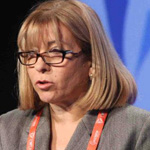
Anni Podimata, VP of European Parliament
Unemployment is plaguing Europe, and just this week Anni Podimata, Vice President of the European Parliament told delegates attending EWEA’s 2013 Annual Event in Vienna that youth unemployment has reached “unprecedented levels.”
But despite the jobs crisis, one sector – wind power – said yesterday that it still needs to hire more than 5,000 workers per year in order to fill a considerable skills shortage in the industry.
“By 2030 there could be a skills gap of 15,000 workers if current hiring levels continue,” Andrew Garrard, Chairman of renewable energy consultancy GL Garrard Hassan, told journalists attending a press conference in Vienna. “We are going to 400 GW [of wind power capacity] by 2030 – and that takes a lot of people,” Henning Kruse from Siemens and Chairman of TPWind, added.
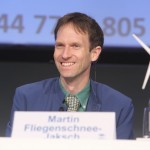
Martin Fliegenschnee-Jaksch
Martin Fliegenschnee-Jaksch makes a habit of setting light to tea bags. It’s not a strange form of arson but a way of demonstrating thermal lift to children at the schools he visits to talk about wind energy. The tea bag, once lit, zooms up into the air – just as a turbine blade will rise up and start to turn as the wind passes over it, he told participants at the EWEA 2013 Annual Event in Vienna on Thursday.
He was speaking at a session on social acceptance, at which presenters discussed ways to communicate on wind energy and to improve public support for it.
Tomas Soderland from PowerQuest in Sweden presented a “code of conduct” that had been drawn up for wind energy developers, in order to show their commitments to “ethical standards” and in doing so get support from local stakeholders like farmers associations, he said. Could the whole European industry join together to draw up a wider code of conduct, he wondered?








 Comments
Comments



